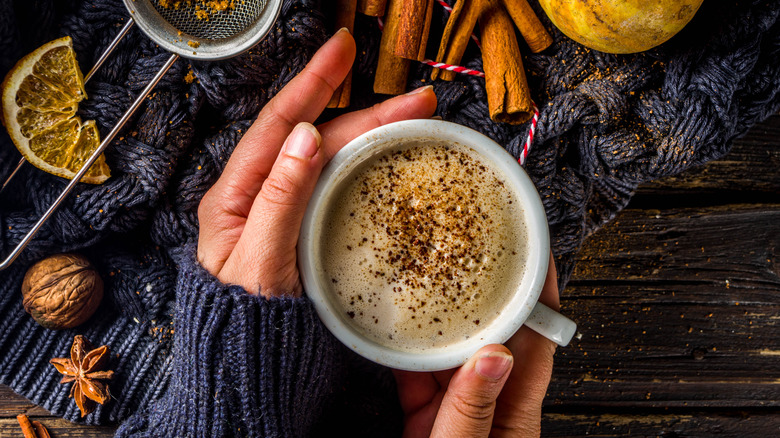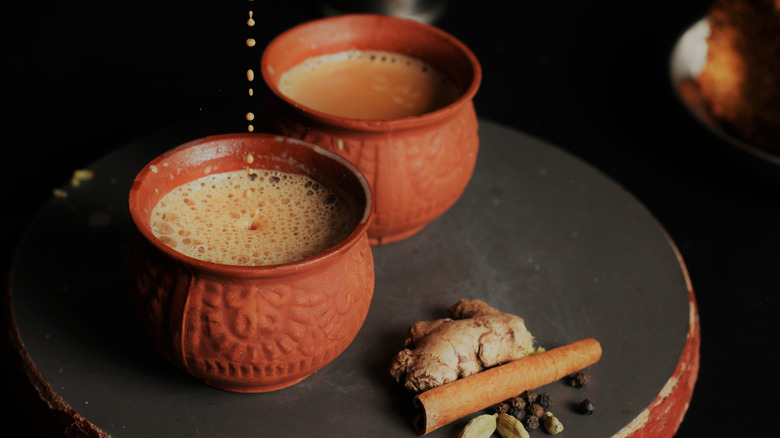The Difference Between Dirty Chai And Regular
From masala chai to the chai latte to now the dirty chai, the history of chai dates back thousands of years and, as it evolves, the drink has become a staple in coffee and tea shops across the world, according to The Spruce Eats. While the traditional recipe is of course a fan favorite, the dirty chai is gaining popularity as a coffee alternative. A blend of espresso and the signature tea, The Spruce Eats says the drink has also been referred to as espresso chai, java chai, red eye chai, chai charger, and the "tough guy" chai.
Originally considered a healing beverage in India, masala chai was designed to incorporate spices that added some heat to help indigestion, like ginger and black pepper. Mix in cinnamon for respiratory and circulation improvement, cloves' antiseptic properties, and cardamom as an overall mood booster, and chai was a drink fit for royalty (via Teatulia). In the 1830s, black tea leaves began being added to the spice blend, as British colonizers opened tea farms across Assam, India, altering the recipe forevermore and increasing its appeal with the colonizers (via The Spruce Eats).
The way tea lovers now drink chai is thanks in part to the mass accessibility that came in the 1960s with Crush, Tear, Curl mechanized tea production. The drink's accessibility has also expanded in the U.S. through chai concentrates, which The Spruce Eats explains baristas often make use of. So while chai isn't always still made by hand, those sought after spices remain, and feel more convenient than ever to many — and so the dirty chai was born.
One shot or two?
The dirty chai has the same warm, cozy notes found in masala chai, but with a caffeinated kick. Considered a latte drink, a dirty chai contains a single or double shot of espresso for a stronger coffee flavor and caffeine effect. The black tea and espresso really deal a "double whammy," as The Spruce Eats says, because your standard 12-ounce dirty chai latte contains 160 milligrams of caffeine, while a regular chai latte will only contain 50 to 70 milligrams. Like most lattes, the hot and cold versions of a dirty chai have slight variations, with hot generally including steamed milk and cold served over ice. Added sweeteners are a personal choice, but why stop the customization there?
There are a few different types of dirty chai options for you to create at home or request as a "secret menu" customization at your favorite coffee shop. Substitutes include swapping the whole milk for almond, soy, or cashew to create a vegan dirty chai, replacing the black tea with green for a "green dirty chai," or simply requesting additional flavor syrups like cinnamon, vanilla, or toffee (via The Spruce Eats). The main difference between a regular and a dirty chai comes from the inclusion of espresso, so when you're craving something creamy and spicy, but also need that added boost, request a shot and check the dirty chai out.

